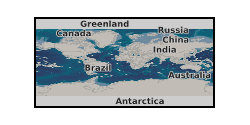Rich Text Format (rtf)
Type of resources
Topics
Keywords
Contact for the resource
Provided by
Years
Formats
Representation types
Update frequencies
-
This resource contains anonymised policy interviews on trypanosomiasis in Zambia from 2013 conducted by Catherine Grant (Institute of Development Studies) and Noreen Machila (University of Zambia, Department of Disease Control). These interviews explore the differing opinions of various stakeholders in relation to trypanosomiasis, a widespread and potentially fatal disease spread by tsetse flies which affects both humans and animals. It is an important time to examine this issue as human population growth and other factors have led to migration into new areas which are populated by tsetse flies and this may affect disease levels. This means that there is a greater risk to people and their livestock. Opinions on the best way to manage the disease are deeply divided (Source: Author Summary- Grant, C, Anderson, N and Machila, N [Accepted] Stakeholder narratives on trypanosomiasis, their effect on policy and the scope for One Health, Public Library of Science Neglected Tropical Diseases (PLOS NTD). This was part of a wider research project, the Dynamic Drivers of Disease in Africa Consortium (DDDAC) and these interviews contributed to this consortium. The research was funded by NERC project no NE/J001570/1 with support from the Ecosystem Services for Poverty Alleviation Programme (ESPA). Full details about this dataset can be found at https://doi.org/10.5285/727c1c4e-e097-44a4-abc7-74a4cc9acbfc
-

The data are nanoindentation, high-angular resolution electron backscatter diffraction (HR-EBSD), and transmission electron microscopy data collected on samples of synthetic forsterite bicrystals at room temperature. The data were collected in two samples, with high- and low- angle grain boundaries (HAGB, 60°, [100]/(011) and SB, 13°, [100]/(016)). The EBSD data are the basis for the HR-EBSD calculation. The HR-EBSD results are presented as Matlab data files. The nanoindentation data are categorised as a function of sample (‘ol13’ – low-angle grain boundary; and ‘ol60’ – high-angle grain boundary), and indenter tip geometry (spherical (with a 10 or 5 micron radius) and pyramidal (Berkovich). The data are presented in .xls files. The TEM data are presented as .tif files. The TEM data were collected in specific indents with various distances from the interfaces. These data have been published in the manuscript: : The Role of Grain Boundaries in Low-Temperature Plasticity of Olivine Revealed by Nanoindentation, with the DOI: 10.1029/2023JB026763
 NERC Data Catalogue Service
NERC Data Catalogue Service